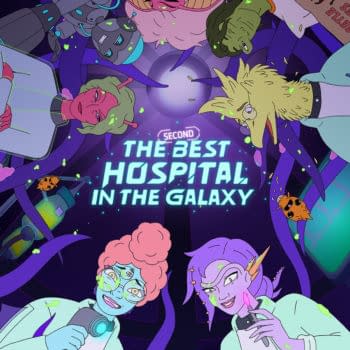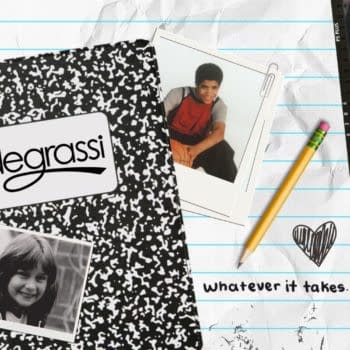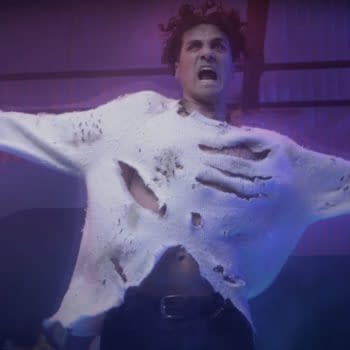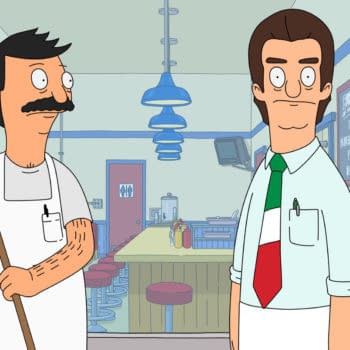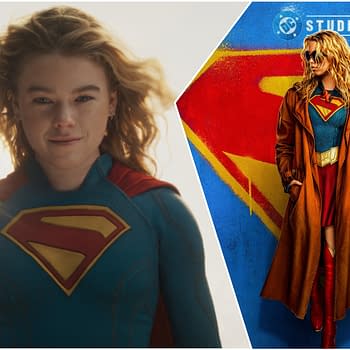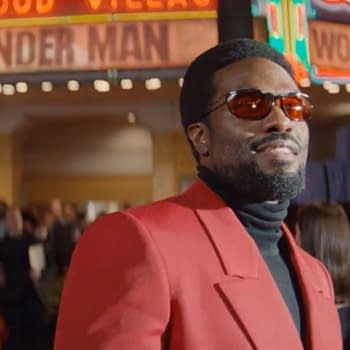Posted in: Horror, Interview, Movies | Tagged: Anthony DiBlasi, clive barker, horror, horror films, in theaters, interview, Last Shift, Malum, Natalie Victoria, Russell FX, Welcome Villain, Welcome Villain Films
Malum's Anthony DiBlasi & Natalie Victoria on Horror, Remakes & More
We spoke with Anthony DiBlasi and Natalie Victoria about their new horror film Malum ahead of its March 31st theatrical release.
Malum director Anthony DiBlasi, and star, Natalie Victoria chat with us about their new horror film ahead of its end-of-month release. Discussing the changes in filmmaking, the horror genre, and the difficulties involved in remaking your own film are all included in our interview. Malum opens in theaters on Friday, March 31st.

Malum is a bold and expanded reimagining of the 2014 horror cult classic, Last Shift. On a search to uncover the mysterious circumstances surrounding her father's death, a newly appointed police officer, Jessica Loren (Jessica Sula), is assigned to the last shift in a decommissioned police station where a notoriously vicious cult saw their demise years prior. The loan officer at the station, she soon finds herself barraged by terrifying paranormal events and, in the process, is taken on a journey during which she learns the shocking truth behind her family's entanglement with a demented cult leader. Malum takes the premise of the 2014 festival hit and flips it on its head, thrusting viewers into an unrelenting, adrenaline-fueled, bloody cult nightmare.
Anthony DiBlasi on Remaking a Horror Film
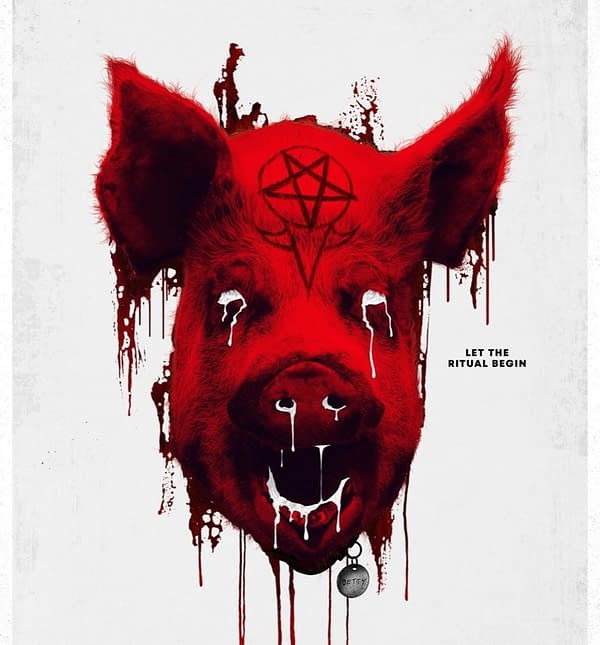
It's a rare thing for a filmmaker to decide to remake a film of theirs. Walk me through the decision to remake your own movie. How did that go?
AD: So when I was introduced to Luke LaBeau, right around the time they started their company Welcome Villain, we hit it off, and he said, "Have you ever thought about revisiting the Last Shift world?" Scott Poiley and I talked a lot about doing a sequel, but we never wrote it and never got it off the ground. We didn't even write a treatment or anything for it. We discussed it, and after more discussion, we asked, "Why don't we re-imagine the first one?" The first one, I was thrilled with it; it ultimately did everything I wanted it to do. As far as a film, it was a smaller-budget movie. We had to leave some on the table, but I never walked away feeling like, "Oh, I wish I had done that or wish I did this." We designed that movie for a theatrical experience, but it never played theatrically in the states. With this film, we talked about how we knew we would do a theatrical run from the get-go. Now we had the resources to deepen the mythology for the cult and tell a different story with the characters that I already knew I liked and kind of reapproached it that way. So that was how it came together—having those resources to make a bigger movie and a film that will be seen in theaters.
Practical effects in the film are fantastic and very rightfully horrifying. How did these visions kind of come to life, and do you each have a favorite effect of yours? If you can say so.
AD: Early on, we knew that the Last Shift had some cool effects in it, and if we do another one, we'd have to really amp it up on the practical stuff and make sure we delivered. We allocated a good amount of resources for that, and when we hired Russell FX, so many conversations occurred because, for them, it was a lot of stuff to handle throughout the entire film. We went through our priorities and our heroes and said, "These are the ones that have to play above and beyond." It was a great collaboration with them. I did some kind of crude sketches of what I was thinking of what it would be like. Next, they'd take it to the next level, start sculpting with clay, take this crude stuff, and mold it into this great character. In the third act, that hanging sequence that Jessica encounters, that was always a really big moment for me when writing it. I wanted to ensure that movie was delivered for an audience, so that's a big one for me.
NV: With that sequence, the special effects were great. All the way down to the end, you see Jessica, and she is just covered, and it's awesome how she was covered as well. That and the monsters that are throughout the film; no, to give spoilers away or anything, but the creature design is really cool. Those were my favorites, for sure. With the practical facts, there's just so much detail in them.
Natalie Victoria and the Tears of Marigold
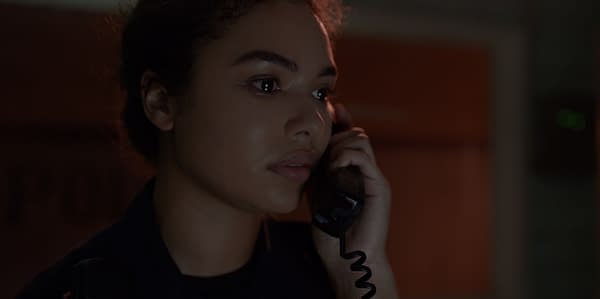
Natalie, you needed no practical effects for your performance. The tears and shaking you produce in that scene are unique and terrifying. How did you go into that mindset and go through those ranges of expression?
NV: Yes, thank you. Firstly, yeah, that's all real. We had to do it a few times, so I was exhausted by the end of the day. The prep work involves many different acting exercises, and I've taken classes with so many amazing coaches throughout the years. There's nothing like being on film and having those experiences of acting over the last decade plus. I did a lot of particular emotional exercises. From my own experiences, I've had some interesting things happen to me over the last couple of years, several years, that I pulled from my experiences and to get into the character. That and the fear of Anthony is a very strong motivator.
AD: Very obviously, we're married, and I want to see you do this kind of stuff on camera. I know you have this range, and it can happen in a short amount of time. At that moment in the script, I catered it very specifically to "If you went here and then here," and she replied, "You want me to do all this in one day? In this one scene?" Yes, you can do this; you can go to these places.
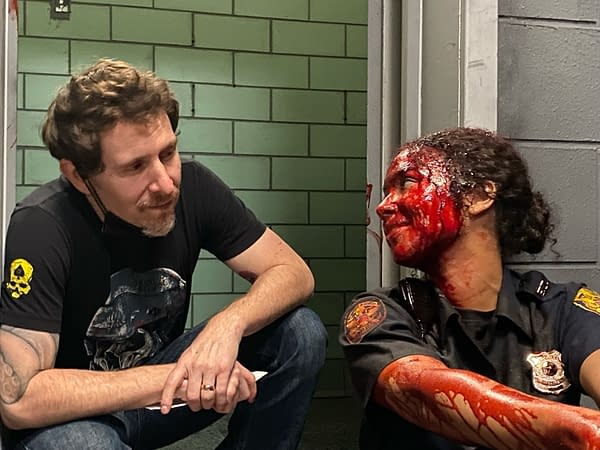
There's definitely a unique feeling of dread present in Malum, similar to what's found in a sort of haunted or isolated setting. What is important to remember when making a film like this one that has so much of that incorporated?
AD: I felt like the first one had a sense of dread that felt creepy and spooky and sustained this feeling. In Malum, it's different, and there's more going on. I think most of it arrives on the page, and then you're trying to put it in there. When I direct, I want to create a real experience for the performer, almost like it's a play, even though there's a bunch of crew around. I want to see if I can let them disappear in it and in a location that feels genuine. We shot in a real police station that was decommissioned. It was a very big police station with this inherent feeling of "This place is creepy. This place has as history." Remnants of the inmates were still present, the lights didn't work in half of the building, every corner smelled like urine, and random blood stains and mold were on the walls. As a director, you want to start laying the seeds, and you want to start learning. A new actor came up, and I got to give them a little tour. You want them to start feeling uneasy. It's all about the showmanship, and that hopefully is seen through the camera.
NV: There was a heaviness that you felt. The station was like four stories; it was just huge. I remember there were some hallways where, as an actor, I was like, "I'm not going to go down that one." As a performer, I would say being in a real set, a real place, has this visceral element that lets you go to an expansive-level performance and take it to the next level as an actor.
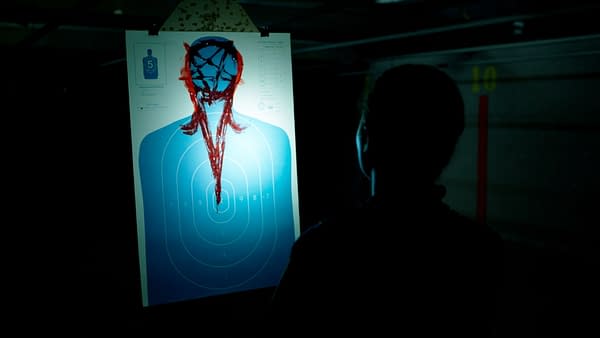
What kind of has changed for both, or either of you, with how you approached Last Shift and how you've recently approached Malum?
AD: Coming from producing originally and getting all sides of the production process, I dissect the budget when I'd approach a movie. I'd ask, "How am I going to achieve or create the best movie for what we have and ensure the money's going in all the right places?" With this movie, I was a little less compromising with myself. Often Scott and I were like, "All right, well, how do we change that? How do we fix this? We lost a chunk of money because something went here; how do we do this now?" And then I'd answer with, "No, we're just going to do it." This was the first movie where I said, "No, we're just going to do it. We're going to gut it out. We're going to figure it out. We're going to get through it." I was very much persistent like that in this film. I was just less willing to compromise with the producers and stuff because we had a good working relationship, but less willing to compromise with myself because I'm not going to find another way to do this. I'm going to do it the way I can do it. I think that definitely translates onto the screen, and it becomes ambitious. If you're shooting for something that's really hard, then even if you fail, you're probably still gonna land above where most people would expect.
Natalie, can you expand on your role a little bit? Because it feels like there's a lot more depth to how you portray your character in Malum compared to Last Shift.
NV: Talking on a character level, in the first one, Marigold is more vulnerable, and she's running from something, and you're a little uncertain about her, whether she's a ghost or a real person and that accessibility to her. That was a specific note from Anthony at the time to play it that way. This time around with Malum, it's almost like an alternate universe, and so you get a chance to re-imagine this role. She feels a little bit sure of herself, but there's also just this unhinged aspect. There's this elevated element of danger where she seems like she could snap at any moment. You're unsure if she's good or bad; what's happening with her? It's this ride, this roller coaster of these super highs and super lows in such a short amount of time for that scene. Being able to be a little bit more expressive with who this person is, build a little bit more richness to that character with just a tad bit more of a little backstory with it was incredibly fun, but also very challenging as as an actor. And I really enjoy challenges, so I was definitely up for it. Once I had gotten permission from the producers and directors to do my own stunts, I was all in. I love doing stunts in movies; I can do that kind of stuff.

What's a horror film that has influenced you the most and why ?
AD: I think it was obviously working with Clive Barker. I was a huge fan of Candyman years before that movie came out, well before I met Clive. I love the world-building he does in that movie and the graphic horror. But also, that was one of the first horror movies where the music and the score moved me. I was like, "This movie's scary but also so beautiful." I'm more invested because there's a beauty to it. The villain is not just some scary villain; he has pathos. I feel for this person. I think that was one of the first horror movies I saw that I was like, "You know what? You can both scare people and move people with a shot or film." I try to do that as much as I can in movies so that it's not just one note along the way. Early on, for me, it was Candyman.
What about you, Natalie? What has really influenced you and maybe influenced how you portrayed your character in Malum?
NV: So I definitely have an answer for you. I would say it would be Fatal Attraction and Glenn Close's character. There's a level of tension and danger with a moment of accessibility and then just complete unhinged actions. The performance that she gives is just such a tense thriller. I think she's a totally underrated actress. She should have won a million Oscars by now. That definitely influenced this version of Marigold for me. I remember seeing that film several times and just being like, wow. There's something about it where she could change on a dime, which made her so dangerous before you saw her full unhinged parts. That was just terrifying. I think there's a part of us that, just given the right push, we can snap, and I think exploring that is fascinating.





